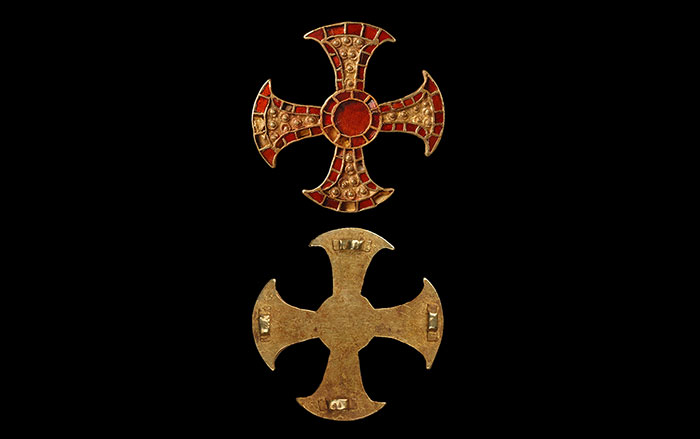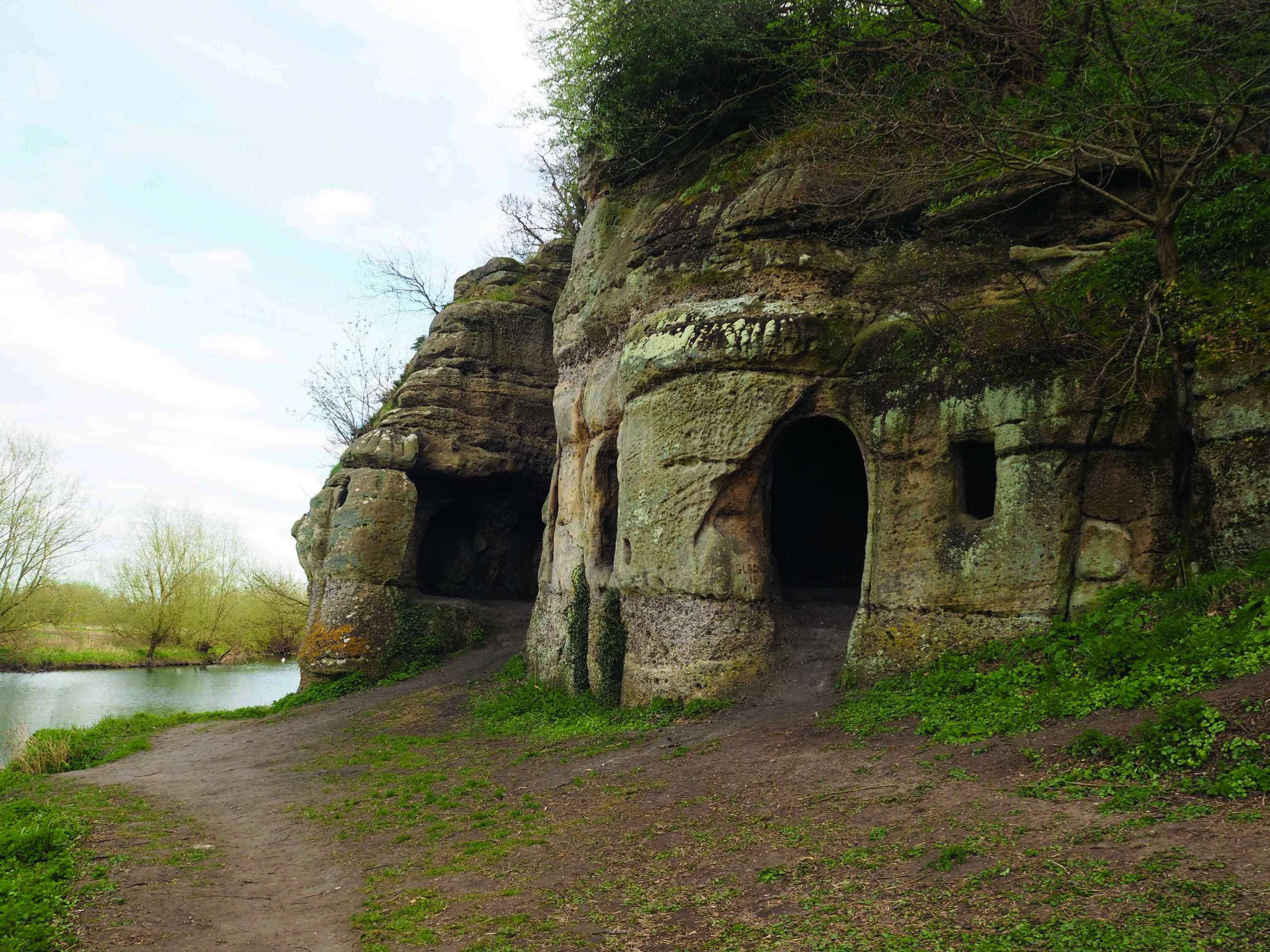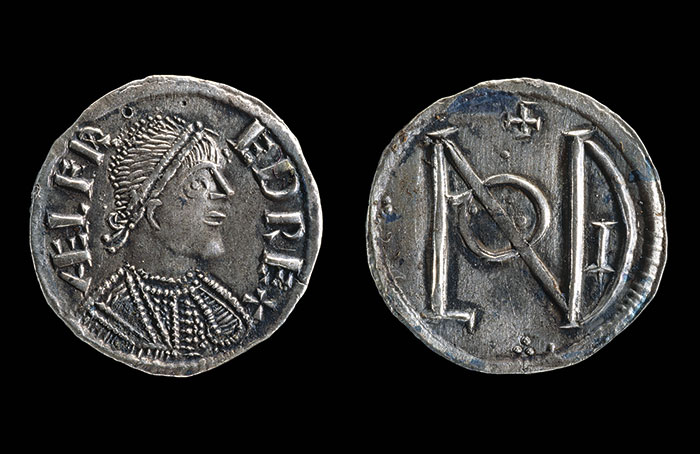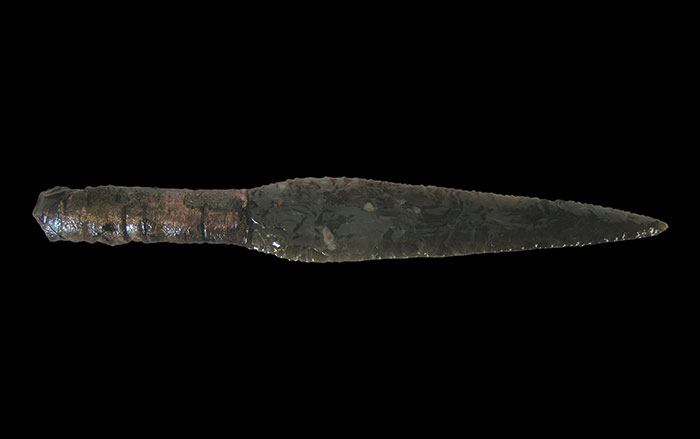
NORFOLK, ENGLAND—Archaeology student Tom Lucking was exploring a private field with a metal detector when a large and deep signal led him to the top of a bronze bowl. He refilled the hole and called in the geophysics team from the Suffolk Archaeological Field Group and Norfolk County Council’s Heritage Environment Service. The excavation revealed that the bowl was at the foot of the grave of an Anglo-Saxon noblewoman who had been buried with a fine pendant made of gold and jewels. “It’s so beautifully made. The garnet cells even have scored gold ‘foil’ at the back of them to catch the light,” archaeologist Steven Ashley of the Historic Environment Service said of the pendant. She also had a chatelaine, and a necklace made of two gold beads and repurposed gold coins. One of the coins in the necklace dates to between 639 and 656, and was minted for the Frankish king, Sigebert III. The bronze bowl was probably also imported from France. “She’s going to have known the kings of East Anglia, and France,” archaeologist Helen Geake commented to EDP 24. The woman’s skeletal remains will be analyzed for information about her age, diet, and medical conditions. For more on Anglo-Saxon archaeology, see "The Kings of Kent.'









